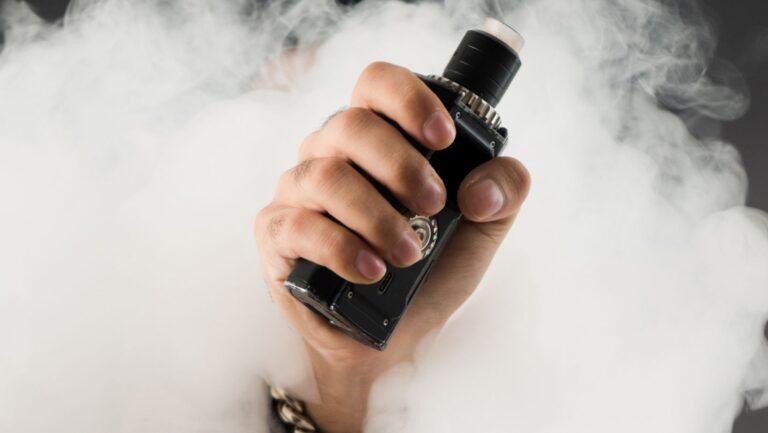Allergies can turn everyday experiences into challenges, and for those allergic to ridugai, this is all too real. Ridugai, often found in various foods and products, can trigger uncomfortable and sometimes severe reactions. Understanding the symptoms and triggers of this allergy is crucial for managing one’s health and lifestyle. Navigating life with a ridugai allergy requires awareness and preparation. From reading ingredient labels to finding suitable alternatives, individuals must stay informed to avoid accidental exposure. This article delves into the nuances of ridugai allergies, offering insights into symptoms, management strategies, and tips for living well while staying safe.
Allergic To Ridugai
Ridugai is a substance that can trigger allergic reactions in sensitive individuals. Recognizing its nature, uses, and associated risks is crucial for effective management of allergies.What Is Ridugai?
Ridugai is a compound typically derived from specific plants and used in various products. It may appear in food items, cosmetics, and pharmaceuticals. Ridugai can cause allergic responses in individuals with sensitivities, leading to symptoms such as skin rashes, digestive issues, and respiratory difficulties. Knowing its chemical composition and potential sources aids in avoiding contact and exposure.Common Uses of Ridugai
Ridugai finds application across several domains, including:-
- Food industry: Ridugai acts as a flavor enhancer in processed foods.
-
- Cosmetics and personal care: Ridugai serves as a fragrance or preservative in skin and hair products.
-
- Pharmaceuticals: Ridugai appears in certain medications as an inactive ingredient.
Allergic Reactions to Ridugai

Symptoms of Allergy
Common symptoms of ridugai allergy include:-
- Skin Reactions: Hives, rash, or eczema may appear.
-
- Respiratory Issues: Symptoms such as nasal congestion, sneezing, or asthma may arise.
-
- Gastrointestinal Distress: Nausea, vomiting, or diarrhea can occur after exposure.
-
- Anaphylaxis: In severe cases, individuals may face life-threatening symptoms, including difficulty breathing and swelling of the throat.
Causes of Allergy
Ridugai allergies often result from hypersensitivity to specific proteins within the compound. The primary causes include:-
- Genetic Predisposition: Family history can increase susceptibility to allergies.
-
- Environmental Factors: Exposure to ridugai-containing products, especially in foods or cosmetics, can trigger reactions.
-
- Cross-Reactivity: Individuals may react to ridugai due to similarities with other allergens, such as those found in certain plants.
Diagnosing Ridugai Allergy
Diagnosing a ridugai allergy involves several steps, including tests and medical evaluations to confirm sensitivity. Identifying the allergy accurately assists in proper management and avoidance of triggers.Tests and Procedures
-
- Skin Prick Tests: Health professionals conduct skin prick tests where a small amount of ridugai is introduced into the skin. Observing any reactions helps determine immediate sensitivities.
-
- Intradermal Tests: For more precise results, intradermal tests involve injecting a small amount of ridugai into the skin. This method may identify allergies not detected by skin prick tests.
-
- Blood Tests: Blood tests measure specific IgE antibodies to ridugai. Elevated levels indicate an allergic response, providing further confirmation.
-
- Oral Food Challenges: Under medical supervision, patients may ingest small quantities of products containing ridugai to observe reactions directly. This test aids in understanding the allergy’s severity.
Medical Evaluation
-
- Comprehensive Medical History: Physicians review patients’ medical histories, including prior allergic reactions, family histories, and environmental exposures, to assess risk factors for ridugai allergies.
-
- Symptom Assessment: Evaluating symptoms experienced after exposure to ridugai guides physicians in establishing connections between symptoms and potential allergen triggers.
-
- Referral to Allergists: Patients may receive referrals to allergists for specialized testing and tailored management plans, ensuring focused treatment of ridugai allergies.
-
- Collaboration with Other Healthcare Providers: Allergists may work with nutritionists, dermatologists, or pulmonologists to develop comprehensive care strategies, addressing various aspects of health impacted by the allergy.
Treatment Options
Effective treatment for ridugai allergies primarily focuses on prevention and management of symptoms. Individuals should adopt avoidance strategies and, if necessary, utilize medications to address allergic reactions.Avoidance Strategies
Avoidance strategies play a crucial role in managing ridugai allergies. Individuals must read all ingredient labels thoroughly to identify products containing ridugai, which appears in food, cosmetics, and pharmaceuticals. Choosing certified hypoallergenic products minimizes accidental exposure. Identifying and avoiding cross-reactive substances, such as other plant-derived ingredients, provides additional protection. Maintaining open communication with food providers, restaurants, and healthcare professionals ensures that potential allergens are clearly understood. Establishing an emergency action plan that includes access to an epinephrine auto-injector prepares individuals for unexpected exposures.Medications for Allergic Reactions
Medications serve as a vital component of managing ridugai allergy symptoms. Antihistamines, such as diphenhydramine or loratadine, effectively alleviate symptoms like hives and nasal congestion. Corticosteroids, available in topical or oral forms, reduce inflammation during severe reactions. In cases of anaphylaxis, immediate administration of epinephrine is critical. Individuals should carry an auto-injector and educate themselves on its proper usage. Consultation with a healthcare provider will yield personalized medication plans to address specific symptoms and ensure optimal management of ridugai allergies.Living with Ridugai Allergy
Living with a ridugai allergy requires vigilance and preparation to manage symptoms and avoid triggers effectively. Understanding dietary considerations and symptom management strategies plays a crucial role in maintaining quality of life.Dietary Considerations
Individuals allergic to ridugai must scrutinize ingredient labels, as ridugai often appears in processed foods, flavorings, and sauces. Choosing alternatives like fresh fruits, vegetables, and whole grains can help avoid exposure.-
- Read labels: Carefully check for ridugai in food products, including snacks, dressings, and meals.
-
- Opt for whole foods: Consume unprocessed foods to reduce the risk of accidental exposure.
-
- Identify hidden sources: Recognize that ridugai can be in unexpected items like certain beverages or condiments.
Managing Symptoms
Managing symptoms of ridugai allergy involves both preventive measures and immediate actions during allergic reactions.-
- Antihistamines: Use antihistamines to alleviate mild symptoms like hives or nasal congestion.
-
- Epinephrine auto-injector: Always carry an epinephrine auto-injector to treat severe reactions, such as anaphylaxis.
-
- Track symptoms: Maintain a journal of symptoms and potential triggers to identify patterns and avoid specific issues.




